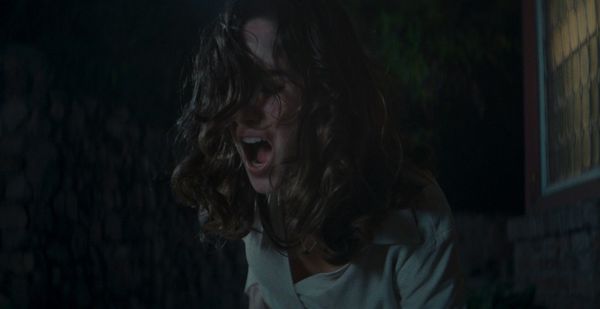Eye For Film >> Movies >> Push (2024) Film Review
Push
Reviewed by: Jennie Kermode

If you’ve ever purchased a house, you’ll know how the promotional photographs work. They’re carefully framed, lit and lensed – with varying degrees of skill – to give the impression that everything is bigger and higher quality. Like the directors’ previous works, The Boy Behind The Door and The Djinn, Push looks magnificent throughout, and yet at a structural level, it’s rather ordinary.
There is an affecting layer of backstory. We first meet Natalie (Alicia Sanz) in Barcelona in 1993, when she’s in the immediate stages of grieving for her American lover, who has died in a car crash. Further flashbacks give us a glimpse of life as she would prefer to be living it, and we see the toughness that gets her through, despite others’ dismissal of her ability to cope alone. Eight months later she’s in northern Michigan, having rebuilt her life and found work as a real estate agent. Her ambitions are founded on her ability to sell a house that some in the business consider unsellable. Its previous owners were murdered. There have, we learn, been several ‘freak accidents’ since. These, at least, are the reasons we’re given. Discerning viewers might take one glance at the grating mishmash of Shingle, fake Tudor and Spanish Colonial architectural styles and conclude that there’s no mystery at all.
For female estate agents, however, there is always risk, as high profile disappearances like those of Suzy Lamplugh in England, Lindsay Buziak in Canada and Yanfei Bao in New Zealand/Aotearoa have demonstrated. Natalie is holding an open house event, so she’s not quite as vulnerable as a woman scheduling an appointment with a lone male stranger, but the house is very remote, and when nobody shows up except for one man (Raúl Castillo), right at the end of the day, she’s wary. She uses her professional calm and confidence to get him out of the door before the sun goes down, but something feels wrong. Then she discovers that her car won’t start. Given that she’s heavily pregnant, being isolated like this would be a worry under any circumstances. With odd little noises sounding inside the house and objects not where she remembers leaving them, her situation becomes increasingly disturbing.
Although it stays close to Natalie, the camera often shows viewers more than she can seem inviting us to fear for her more than to identify with her, but she is a pleasingly sensible character, resisting panic – perhaps reasoning that she needs to for the baby’s sake – and arming herself in a practical way. When she goes into premature labour, her breaking waters don’t leave the slightest stain on her white dress, and her contractions are remarkably late – one wonders if anyone who’s been through the process was consulted – but they add an extra element of peril to the story, and Sanz very effectively captures the difference in thinking that pregnancy effects, guarding her belly, taking fewer risks, recognising that sometimes the best form of defence is attack.
For all its aesthetic shortcomings, the house makes a wonderful maze. We get an initial tour but the layout is never fully clear, and it has a few surprises in store. The directors use it to great effect. Even though we spend a fair bit of the running time just wandering round the corridors, they build up a fantastic amount of suspense. The beautiful photography also makes it difficult to look away. Slowly drifting camera movements like those one finds in real estate promotional videos establish a seductive, gentle rhythm, so that the film’s few jump scares are properly effective.
The later stages of the film, after it shifts locations, are less effective and still more derivative. At times it’s unclear whether or not they’re meant to be a dream, as numerous elements fail to make sense, and perhaps that ambiguity is intentional. A suggestion of the supernatural fits in easily with the tone of the film but depletes it in other ways. As for the post-credits sequence, it’s so crude and unnecessary that I strongly recommend avoiding it altogether, and hope the filmmakers have the sense to cut it out before their work reaches a wider audience. It embarrasses what is, elsewhere, a finely crafted piece of work.
For what it is, Push is not at all bad, but it feels as though there was an original idea here that market pressures have badly mistreated. Charbonier and Powell are capable of doing much better.
Reviewed on: 10 Oct 2024














